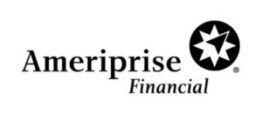
A National Examination Risk Alert was issued on Nov. 30 to inform broker-dealers how to develop effective policies and procedures for branch office inspections as a way to combat broker fraud, unsuitable investments and failures to supervise.
Jointly Issued by the FIRNA & the SEC
The alert was jointly issued by the Financial Industry Regulatory Authority, or FINRA, and the Securities and Exchange Commission’s Office of Compliance Inspections and Examinations, or OCIE. The alert reminded firms of supervisory requirements under FINRA rules, noted common deficiencies, and described strong compliance practices.
A tutorial on strong compliance and supervisory practices may help regulators head off situations like the one at LPL Financial LLC, which was recently fined $100,000 for failing to supervise on of its brokers who worked out of a branch office. Broker Jack Kleck sold unsuitably risky investments to clients in their 80s who had conservative investment goals and were not able to understand the potential downside of the complex products. LPL was fined by the Oregon Department of Consumer and Business Services.
The responsibility of broker-dealers to supervise their brokers is critical to the federal regulatory scheme. Sections 15(b)(4)(E) and 15(b)(6)(A) of the Exchange Act authorize the Securities and Exchange Commission, or SEC, to sanction a firm or any person who fails to reasonably supervise someone subject to the supervision of that firm who violates federal securities laws.
Risk Alert: Best Practices
According to the Risk Alert, FINRA and OCIE staff observed firms with good processes and came up with a list of best practices that investors would be well-advised to look for when choosing a broker-dealer.
The best practices include assessing risks specific to the business conducted by the branch, scheduling exams based on underlying risk rather than on an arbitrary cycle, inspecting each branch at least annually and performing unannounced exams, using examiners with expertise and making sure the examiners do not have conflicts of interest.
Those broker-dealer firms who do a poor job with inspections typically used the following inadequate processes. They: used the same procedures for all branch offices, regardless of specific business and risk; used unseasoned examiners; inspected the branch office with a check list and without critical evaluation; devoted little time to exams and never reviewed their effectiveness; failed to follow their own policies regarding the frequency of exams and unannounced exams; failed to produce written reports; failed to adopt policies regarding brokers who conduct business away from the firm; and failed to heighten the scrutiny of brokers with a disciplinary history.
Inspection programs designed with risk in mind should use experience inspectors vetted for conflicts. A system to monitor the outside business activities of brokers is also of major importance, the Risk Alert said, because customers may perceive these activities as part of the firm’s business, creating additional risk. Firms should confirming the scope of the outside business, as well as perform unannounced inspections, so the subjects would not have an opportunity to hide, alter or destroy documents.
A written report must be produced after every branch-office inspection per National Association of Securities Dealers ASD Rule 3010(c)(2). The Risk Alert said that, at minimum, this report should features testing and verification of the firm’s policies and procedures. It should also identify improvements and deficiencies. The report should propose actions to correct the deficiencies.
FINRA & OCIE May Review Firms
FINRA and OCIE examiners may seek to review a firm’s branch examination program, according to the Risk Alert. Examples of procedures typically reviewed include: the supervision of customer accounts; the handling of money and securities; validation of changes to account information; and transfers of funds between customers and third parties and between customers and brokers.
In addition, policies and procedures related to specific retail products identified as high risk may be scrutinized. These include: sales of structured products; private and other unregistered offerings; municipal securities; mutual funds; and variable annuity sales and exchanges.
Examiners from FINRA and OCIE are also likely to look closely for a system designed to catch such violations as the recommendation of unsuitable investments, unauthorized trading, churning, improper advertising and unauthorized business activities.
A number of SEC decisions regarding branch office inspections have laid out principles that can guide broker-dealers as they build an effective program.
Those cases suggest that regular branch office inspections over reasonably short intervals, including unannounced inspections, are the cornerstone of a well-designed branch office inspection program.
For example, in the 2004 Fidelity Brokerage Services LLC case, pre-announced inspections resulted in employees altering and destroying documents, among other things. The sanctions in that case, which settled, included a $1 million fine payable to the SEC, plus another $1 million fine payable to the New York Stock Exchange.
As a result of cases like this, OCIE and FINRA said in the Risk Alert that a well-constructed branch office inspection program should include unannounced inspections, based on a combination of random selection, risk-based selection and for-cause criteria.
Moreover, the Risk Alert called for the involvement of senior management to help ensure that sufficient resources are devoted to program. Supervisory responsibilities should be periodically reassessed and customer complaints should be thoroughly investigated and documented. Personnel need to follow up on red flags that are too often overlooked.
Both FINRA and NASD rule contain detailed guidance on the elements of a strong supervisory system. For example, NASD Rule 3010(c)(3) generally prohibits a branch office manager or any other person with supervisory duties — or any person supervised by such a person — from conducting an inspection of the office.
NASD Rule 3010(c) requires each broker-dealer to periodically examine customer accounts to detect and prevent irregularities or abuses. Written inspection reports must include testing and verification policies and procedures for the safeguarding of customer funds and securities, maintenance of books and records, supervision of customer accounts serviced by branch office managers, transmittal of funds and validation of changes in customer account information. For a more complete list of such rules, see the Risk Alert.
In summary at the end of the Risk Alert, FINRA and OCIE reviewed the practices characteristic of effective supervisory procedures:
- Using risk analysis to identify whether branches should be inspected more frequently than the FINRA’s required minimum three-year cycle, and conducting “re-audit” when branches reveal a higher than normal number of deficiencies, repeat deficiencies or serious deficiencies. Typically, these re-audits are unannounced.
- Using surveillance reports and technology to help identify risk and develop a customized approach to each branch.
- Employing comprehensive checklists that incorporate previous inspection findings and trends from internal reports.
- Conducting unannounced branch inspections either randomly or based on risk factors.
- Including deficiencies and areas of improvement in the written report of each branch inspection, as well as agreed upon actions to correct deficiencies.
- Using examiners who understand the business at the branch enough to challenge assumptions.
- Designing procedures to avoid conflicts of interest on the part of examiners.
- Involving qualified senior personnel in several branch office examinations per year.
- Incorporating the results of branch office inspections into appropriate management information or risk management systems by using a compliance database.
- Requiring branch office managers to take corrective actions.
- Tracking corrective action taken by each branch office manager in response to branch audit findings.
- Elevating the frequency and scope of branch inspections where brokers are conducting business away from the firm.
Finally, the Risk Alert cautioned that it was not providing an exhaustive list of steps that effectively discharge responsibilities. While a good branch office inspection program is a necessary element of a reasonable supervisory system, firms need the flexibility to adopt procedures suited to their business needs. The suggestions regarding compliance methods in the Risk Alert were not meant to be exclusive or exhaustive and, most important, they do not constitute a safe harbor.
Guiliano Law Group
The practice of Nicholas J. Guiliano, Esq., and The Guiliano Law Group, P.C., is limited to the representation of investors in claims for fraud in connection with the sale of securities, the sale or recommendation of excessively risky or unsuitable securities, breach of fiduciary duty, and the failure to supervise. We accept representation on a contingent fee basis, meaning there is no cost to unless we make a recovery for you, and there is never any charge for a consultation or an evaluation of your claim. For more information contact us at (877) SEC-ATTY.








